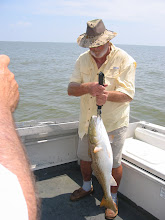

I bought this boat about 6 years ago in Elgin, Ill. It has been in my shop and a rainy day project ever since. It has been cleaned, buffed, waxed many times. The gel coat is terrific looking. The sides and hull have been scrubbed and had several coats of Poli glow applied. The windshield is way above average for this year of boat. All hardware and emblems are intact. If you are looking fro a great old vintage boat, this may be the one for you. MFG's were the sport utility of boats in the 60's.
They were made of all fiberglass composite construction except for the transom core, which I have replaced on this boat with a Nida-Core composite transom. It was all done from the top side, with no damage to cosmetics or thru-hull fittings.
The 1968 Evinrude Speedifour has been completely serviced and runs like a champ. New after market CD pack, NOS solenoid, and rebuilt starter.
The TeeNee trailer has been sanded, painted and new decals applied. All roller hardware was replaced and most nuts and bolts. It looks very sharp. Trailer is completely wired and ready to ride. Wheel bearings cleaned and packed and new seals.
If you have ever restored an old boat, you know what is involved. This boat could be in the water in a couple of weekends! What is needed:
Carpet, seats, battery and a wire steering cable. I have all the hardware.
WHAT IS INCLUDED IN THIS SALE.
1964 MFG Westfield custom featured in March 2009 Fiberglassics calender.
All the elbow grease in scrubbing, buffing and waxing many, many times.
Nida Core transom, no cosmetic damage to hull and original thru hull fittings.
Working lights, horn and all new wiring and fuse block.
Simplex controls stripped, serviced and painted.
1964 MFG pennant flag.
Interior painted.
PoliGlow hull treatment.
Mooring cover.
1968 85 HP Evinrude Speedifour
Serviced, tuned-up, new aftermarket CD pack and NOS solenoid.
Rebuilt reduction starter plus two complete starters and two parts starters.
(If you know old motors, you know these are hard to come by.)
New wiring from power head to switch.
Over heat indicator and amp gauge.
Two NOS props.
Gas tank (6 gal metal) cleaned, painted and NOS decals.
Bilge pump, not installed.
Air Glide compass not installed
Montgomery Ward period speedo, not installed, no pickup or line.
1964 TeeNee trailer, sanded, painted and new decals on fender and tower.
New roller hardware and most nuts and bolts.
New trailer wiring and all working lights.
Original tires and wheels and NOS baby moons.
One set of slotted wheels, tires and buddy bearings for transport.
New wheeled jack stand.
Original parts and service manuals.
1966 MFG catalog.
1968 Evinrude catalog.
2009 fiberglassics calender featuring this MFG.
This blog and archived material.
Misc. nuts, bolts and parts.
Bill of Sale, plus copy of bill of sale from when I purchased. Many States did not title boats in this era.
What you need:
Carpet
Seats
Twenty feet of side molding. (standard, easy to find)
Battery
Cable for cable steering system. I have all the hardware.
I honestly believe that is the extent of what it would take to finish this project. Plus incidental parts of course.

They were made of all fiberglass composite construction except for the transom core, which I have replaced on this boat with a Nida-Core composite transom. It was all done from the top side, with no damage to cosmetics or thru-hull fittings.
The 1968 Evinrude Speedifour has been completely serviced and runs like a champ. New after market CD pack, NOS solenoid, and rebuilt starter.
The TeeNee trailer has been sanded, painted and new decals applied. All roller hardware was replaced and most nuts and bolts. It looks very sharp. Trailer is completely wired and ready to ride. Wheel bearings cleaned and packed and new seals.
If you have ever restored an old boat, you know what is involved. This boat could be in the water in a couple of weekends! What is needed:
Carpet, seats, battery and a wire steering cable. I have all the hardware.
WHAT IS INCLUDED IN THIS SALE.
1964 MFG Westfield custom featured in March 2009 Fiberglassics calender.
All the elbow grease in scrubbing, buffing and waxing many, many times.
Nida Core transom, no cosmetic damage to hull and original thru hull fittings.
Working lights, horn and all new wiring and fuse block.
Simplex controls stripped, serviced and painted.
1964 MFG pennant flag.
Interior painted.
PoliGlow hull treatment.
Mooring cover.
1968 85 HP Evinrude Speedifour
Serviced, tuned-up, new aftermarket CD pack and NOS solenoid.
Rebuilt reduction starter plus two complete starters and two parts starters.
(If you know old motors, you know these are hard to come by.)
New wiring from power head to switch.
Over heat indicator and amp gauge.
Two NOS props.
Gas tank (6 gal metal) cleaned, painted and NOS decals.
Bilge pump, not installed.
Air Glide compass not installed
Montgomery Ward period speedo, not installed, no pickup or line.
1964 TeeNee trailer, sanded, painted and new decals on fender and tower.
New roller hardware and most nuts and bolts.
New trailer wiring and all working lights.
Original tires and wheels and NOS baby moons.
One set of slotted wheels, tires and buddy bearings for transport.
New wheeled jack stand.
Original parts and service manuals.
1966 MFG catalog.
1968 Evinrude catalog.
2009 fiberglassics calender featuring this MFG.
This blog and archived material.
Misc. nuts, bolts and parts.
Bill of Sale, plus copy of bill of sale from when I purchased. Many States did not title boats in this era.
What you need:
Carpet
Seats
Twenty feet of side molding. (standard, easy to find)
Battery
Cable for cable steering system. I have all the hardware.
I honestly believe that is the extent of what it would take to finish this project. Plus incidental parts of course.
$2,500.00 Firm !


 paragonfl2@aol.com
paragonfl2@aol.com



















